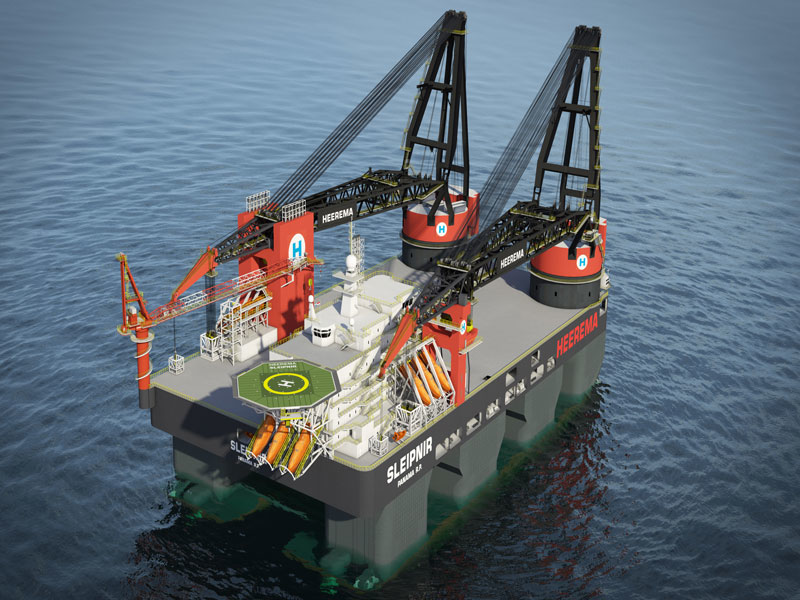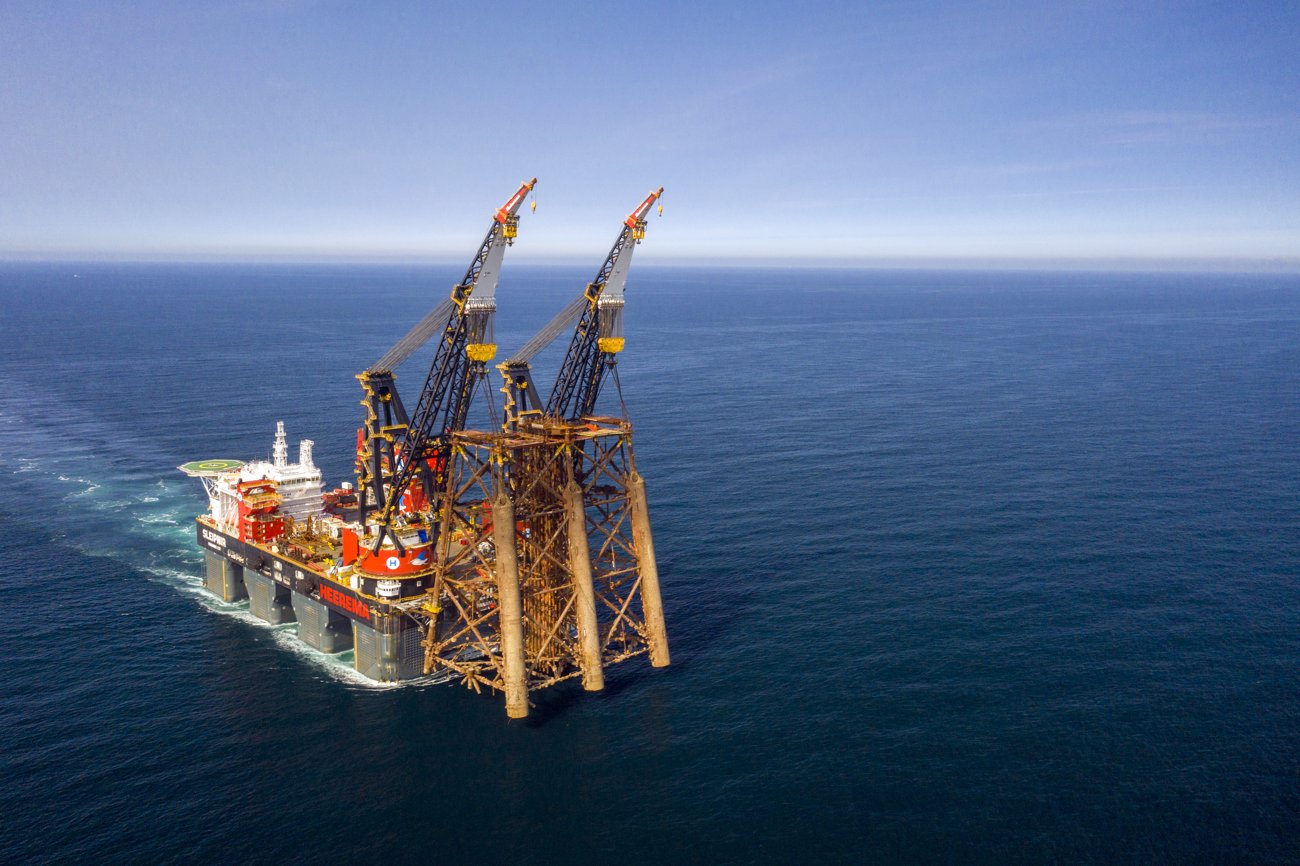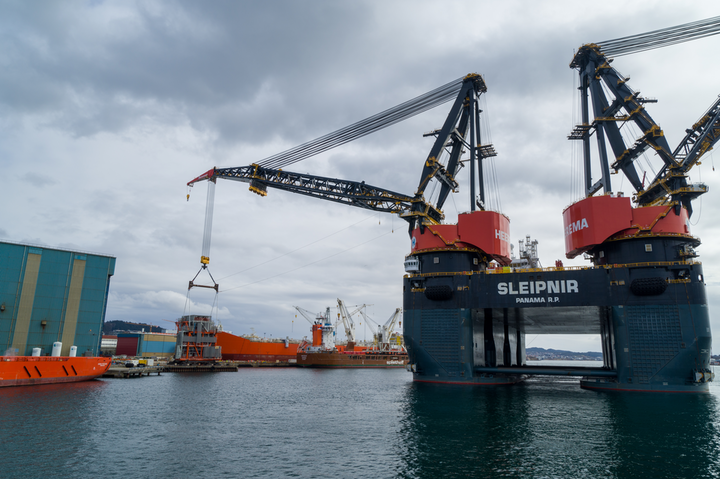
This topsides campaign entailed Engineering, Preparation, Removal, and Disposal/Recycling of five modules, a crane boom, and a burner boom within the Greater Ekofisk Field. Now the Ekofisk 2/4A platform will be recycled up to 99% at the AFEBV decommissioning site in Vats, Norway. The permanent production platform was the oldest on the Norwegian shelf when oil production ended on September, 2013. The decommissioning of the Ekofisk 2/4A platform is the final stage of an important story in Norway’s energy history. Now almost fifty years later, Sleipnir has returned to complete the journey. It was a unique project, as Heerema’s Champion installed the same modules for ConocoPhillips at the Greater Ekofisk Field in the 1970s. Photograph Courtesy of Gemeentearchief Schiedam / Werf Gusto and the Collection of the Heritage Werf Gusto Foundation For more information please visit and follow GE Power on Twitter and on LinkedIn.Heerema’s Crane Ship Champion in 1971 load testing the new crane. Through relentless innovation and continuous partnership with our customers, we are developing the energy technologies of the future and improving the power networks we depend on today.
#Sleipnir crane software#
Operating in more than 180 countries, our technology produces a third of the world’s electricity, equips 90 percent of power transmission utilities worldwide, and our software manages more than forty percent of the world’s energy.


GE Power is a world energy leader providing equipment, solutions and services across the energy value chain from generation to consumption. GE people are global, diverse and dedicated, operating with the highest integrity and passion to fulfill GE’s mission and deliver for our customers. For more than 125 years, GE has invented the future of industry, and today it leads new paradigms in additive manufacturing, materials science, and data analytics. By combining world-class engineering with software and analytics, GE helps the world work more efficiently, reliably, and safely. GE (NYSE: GE) drives the world forward by tackling its biggest challenges: energy, health, transportation-the essentials of modern life. “In addition to the long-term electrical expertise we have in the offshore industry, one of our key strengths lies in our capability of system integration which allows us to create more efficient systems, deliver additional value to our customers and help them maintain fleets with long-term technological advantage and competitiveness in the industry,” said Andy Cooper, Managing Director, GE’s Power Conversion business UK. Together, these measures result in a compact, yet highly sophisticated solution, which facilitates operations while helping to minimize downtime and increase availability. While being more compact than standard solutions, GE’s solution has advanced sensors built in to help operators monitor the health of each piece of equipment in real time and signal possible malfunctions. As a result, the entire power system is designed for fault tolerance in accordance with Lloyd’s Register’s Rules and Regulations (DP AAA). The solution provided by GE has been conceived from the ground up to meet requirements specific to this project.

Coupled with GE’s electric propulsion system, the vessel will see lower emissions when on operations. GE’s power package will also generate and distribute electricity to power the vessel’s entire onboard systems. Sleipnir is the world’s first crane vessel with dual-fuel engines running on either marine gas oil (MGO) or liquefied natural gas (LNG). Paris – 23 October 2019 – Heerema Marine Contractors’ semi-submersible crane vessel (SSCV) Sleipnir has recently successfully completed its first project: the installation of the topsides of the Leviathan development in the Mediterranean, a world record lift, with GE’s power and electric propulsion system onboard.Īt 220 meters long and 102 meters wide, Sleipnir is the world’s largest crane vessel, with two 10,000-tonne revolving cranes. To enable smooth operations of such a “sea giant,” GE was chosen to provide the electrical part of the power and propulsion system including 12 sets of 8-megawatt (MW) generators, eight units of 5.5MW propulsion motors, medium-voltage switchboards, transformers, MV7000 drives and the Visor remote monitoring and diagnostics system. GE’s electric propulsion equipment, coupled with the engine, allows the vessel to run on liquefied natural gas for reduced emissions.



 0 kommentar(er)
0 kommentar(er)
